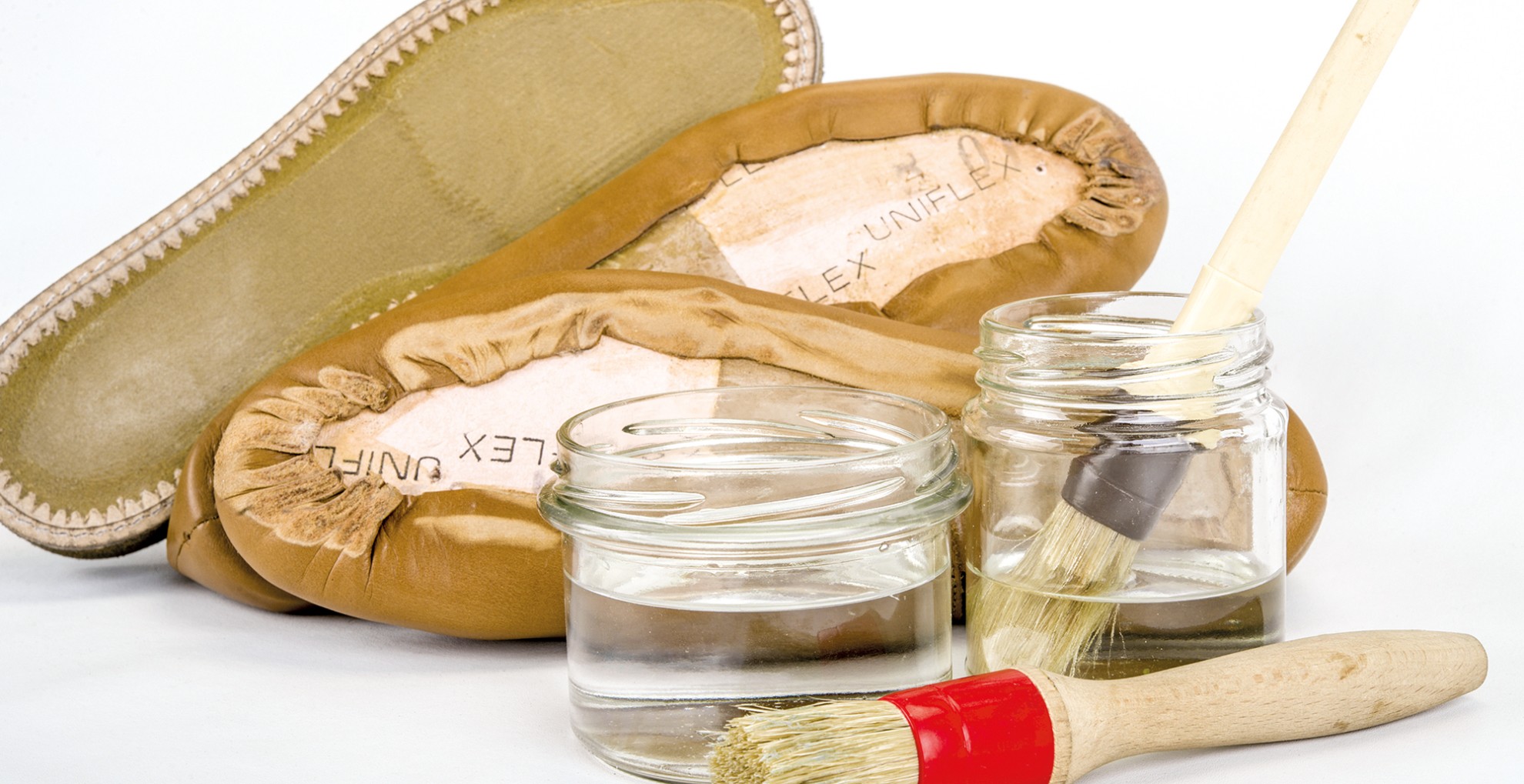


Widely used in the industry of footwear and articles for cementing materials, parts and components, the "primers" are chemicals suitably conditioned surfaces so that there is compatibility in the process of cementing, and obtain secure adhesion.
It is essential before applying the "primers" that the substrates to be cemented are thoroughly cleaned and scraped.
The prior scraping process aims remove contaminants that may be on surfaces and impede proper adhesion. By this action, loose parts and fibers from the substrate, powders, release agents, greases, exudates and finishing paints, among others, are removed.
Adhesion promoters -"primers"- act through chemical interaction with the substrate, altering the surfaces to promote adhesion.
They are used when it is necessary to increase the penetration, impregnation and/or anchorage of the adhesive on the substrate. They are also applied when there is a certain incompatibility between the substrate and the adhesive to be used, due to their chemical characteristics or polarity, acting as a bonding bridge between them.
In addition, they can function as a surface protection barrier against the infiltration of water or liquids or other external elements, significantly increasing the resistance to aging and the permanent stickiness of the surface finish.
"Primers" can be applied with a cloth, sponge, brush or spray
gun, even by immersion, depending on the type of product, substrate or desired
effect.
2 - “Primer” EVA
3 - “Primer” for plastics
It is indicated to apply on rubbers and their derivatives, including TR –Thermoplastic Rubber- allowing the gluing of this type of substrate with polyurethane adhesive.
Presented as monocomponent (ready to use), or bicomponent (requires premix), it is a promoter adhesion agent dissolved in solvent medium or aqueous medium, with variation of the active agent content and composition of the solvent.
The selection of the "primer" halogenating for a particular type of rubber/TR must be through practical cementing tests, varying the content of the active agent and composition of the solvent, if any.
The choice between the "primer" one-component and two-component passes through the same content analysis of active agent and solvent, but also for time validity.
The monocomponent are valid for 3 to 4 months, while bicomponent have a validity of 6 to 8 months of isolated components.
Two-component primers have a certain useful life after mixing the components, which must be observed to guarantee good bonding performance.
The application of the "primer" halogenating may be performed with a brush or dipping, followed by a minimum time of action on the substrate and drying.
The halogenated piece can immediately go to the cementing process, be stored for a certain time in free environment light and dust, or be coated with "primer" or based adhesive for surface protection, and thus allow storage for longer.
The active agent of halogenating agents has corrosive properties, therefore, products and tools that come into contact with the “primer” halogenating agent must not have metallic parts, such as brushes, containers, spatulas, etc.
It is always recommended, for details on types of "primers" halogenating, for validity, and time between application process and bonding, it is advisable to contact the supplier of the product.

It is indicated for its application on injected or molded expanded EVA, allowing the gluing of this type of substrate with polyurethane adhesive.
It may be "primer" EVA cold, or "primer" EVA UV curing.
The cold "primer" EVA is applied to the EVA with a brush, spray gun or by immersion, with drying at room temperature or forced, following the conventional gluing process. It is most frequently used in thermoformed EVA or EVA sheet.
The adhesion provided by this type of "primer"/process is not very high. It is indicated for parts with less need for gluing.
The UV-cured “primer” EVA is applied over the EVA with a brush, spray gun or dip, with room temperature or force drying. However, the surface must be exposed to UV radiation through suitable equipment.
For the success of this operation, it must be ensured that all the bonding areas are exposed to irradiation (free of shadow areas) at an intensity of the order of 550 to 700mJ/cm2.
To do this, the equipment's UV lamps must be constantly cleaned and the quality of the radiation emitted must be monitored, changing them when necessary.
These “primers” are more used for injected EVA.
Recently, new developments allow having solvent-based "primers" for gluing EVA soles and midsoles that do not need to be exposed to UV radiation. In this way, operational costs are reduced and the quality of the bonding is increased.
The diversity of materials used in the footwear and manufacturing industries makes it impossible for this report to provide a list of all indicated adhesion promoters / primers and their respective substrates.
In addition to rubber, TR and EVA, several other substrates require the bonding bridge between the surface and the adhesive film, provided by the adhesion promoter / "primer". These include certain types of polyurethanes, polystyrene, polypropylene, NYLON, PEBAX, AMT, PVC, etc.
For more accuracy on product details and indications, it is always advisable to connect and get technical assistance from the vendor manufacturer.
Source: Adhesives book - ASSINTECAL / Brazil